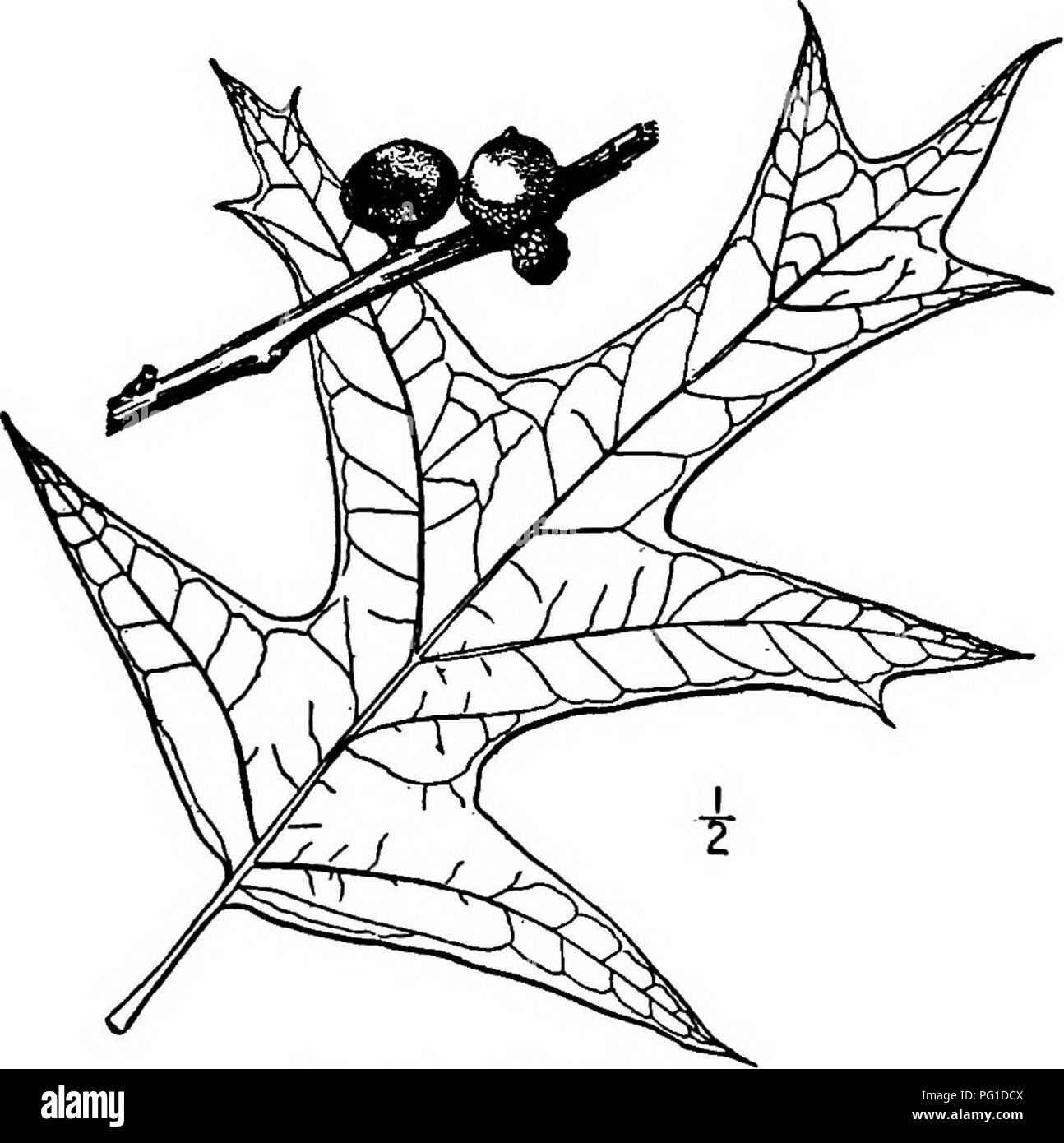. North American trees : being descriptions and illustrations of the trees growing independently of cultivation in North America, north of Mexico and the West Indies . Trees. 296 The Oaks hairy midrib beneath, becoming orange-brown or yellow before falling in the autumn. The leaf-stalk is slender and hairy, r to 5 cm. long. The flowers ap- pear from March to May, as the leaves imfold. The staminate flowers are in clustered slender woolly catkins 7.5 to 12.5 cm. long, their calyx hairy, the 4 or 5 lobes ovate, blunt; stamens exserted, 4 or 5; anthers oblong, notched, smooth, and yellow. The pis

Image details
Contributor:
Central Historic Books / Alamy Stock PhotoImage ID:
PG1DCXFile size:
7.1 MB (260.7 KB Compressed download)Releases:
Model - no | Property - noDo I need a release?Dimensions:
1577 x 1584 px | 26.7 x 26.8 cm | 10.5 x 10.6 inches | 150dpiMore information:
This image is a public domain image, which means either that copyright has expired in the image or the copyright holder has waived their copyright. Alamy charges you a fee for access to the high resolution copy of the image.
This image could have imperfections as it’s either historical or reportage.
. North American trees : being descriptions and illustrations of the trees growing independently of cultivation in North America, north of Mexico and the West Indies . Trees. 296 The Oaks hairy midrib beneath, becoming orange-brown or yellow before falling in the autumn. The leaf-stalk is slender and hairy, r to 5 cm. long. The flowers ap- pear from March to May, as the leaves imfold. The staminate flowers are in clustered slender woolly catkins 7.5 to 12.5 cm. long, their calyx hairy, the 4 or 5 lobes ovate, blunt; stamens exserted, 4 or 5; anthers oblong, notched, smooth, and yellow. The pistillate flowers are on stout hairy stalks, their involucral scales brown woolly, the calyx-lobes sharp-pointed; styles elongated, nearly upright, dark red. The fruit, ripening in the autumn of the second season, is short-stalked; nut subglobose, i to 1.5 cm. long, yellowish brown; cup hemispheric or top- shaped, 15 to 18 mm. across, reddish brown within, embracing about one fourth of the nut, its scales thin, oblong, reddish and covered with pale hairs. The wood is hard and strong, coarse-grained and light red; its specific gravity is about 0.69. It is not very durable and checks badly on drying, and is spar- ingly used for construction purposes but quite extensively for fuel. The astrin- gent bark is sometimes used in tanning and, like the bark of most all oaks, is sometimes used in domestic medicine. Of very distinct appearance, it is quite desirable as a shade tree for park plant- ing, wherever it has proven hardy; it is considerably used in the streets and parks of our southern States. A supposed hybrid with the Black oak, Q, vdutina Lamarck, is reported from Tennessee and North CaroUna. 13. ELLIOTT'S OAK —Quercus pagodaefolia (ElUott) Ashe Quercus jalcata pagodajolia Elliott. Fig. 248. — Elliott's Oak. A tree of swamp borders and along streams from Long Island to southern Illinois and Missouri, southward to northern Florida and Arkan- sas, attaining a maximum height of